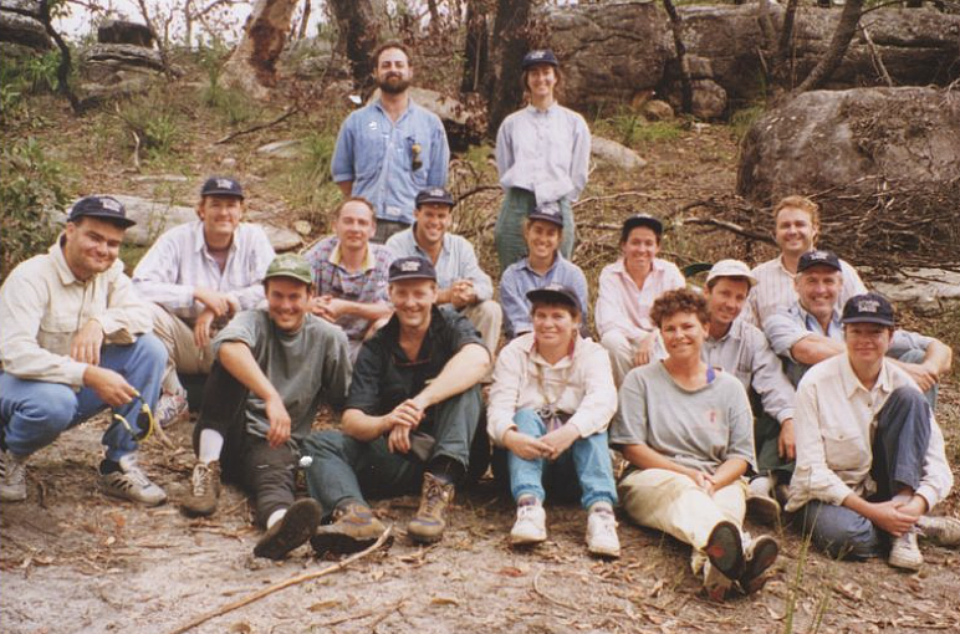
ICDA and BoardPro partnership unlocks digital governance tools for not-for-profits nationwide
Posted on 10 Dec 2025
Adele Stowe-Lindner, Executive Director, Community Directors The Institute of Community Directors…
Posted on 15 May 2024
By Matthew Schulz, journalist, Institute of Community Directors Australia

Not-for-profits should closely examine the federal Budget for opportunities to help solve some of the biggest challenges facing the country, according to a leading social sector economic commentator.

The executive director of the Per Capita economic think tank, Emma Dawson, said that while the budget did not resolve the financial and resource pressures the not-for-profit sector faces, it was a “fairly solid pre-election budget of a first term government”.
“I think it is quite disciplined in its spending, really, in that there’s a lot of demand for support in the economy with households, small businesses and not-for-profit sector organisations that are really struggling.”
While the additional $9.6 billion in spending was a “significant investment” in helping people, it was nonetheless “not a huge proportion of the size of the economy”, she said.
Per Capita was expected to examine the budget in much greater detail and would be looking closely at:

Ms Dawson believed not-for-profit leaders should understand the latest budget through a political lens, with her early analysis of the 2024 Chalmers budget showing the Labor government was setting itself up for an election in 2025.
“I think it's widely recognised that the nonprofit and charity sector is under quite a lot of pressure given the cost-of-living crisis, the inflation issues that we've seen, rising rates of homelessness and housing insecurity, high costs at the supermarket, and on all essential services. The charity sector is on the front line of those challenges.
“At the same time, this is the last Budget of a first-term government before an election. They were obviously quite keen to record another operating surplus [$9.3 billion], despite the ongoing structural deficit the budget will be in.
“The noises coming from the government are that that they're alive to the pressure that people are under, but that they also don't want to put more pressure on inflation.
“Concerningly, there's a view that enough was done last year, particularly in regard to people on very low incomes, when that was clearly not the case.”
Ms Dawson said from the Per Capita perspective the additional support for low-income households was to be expected, but it was “not as much as we would have wanted to see”.
In housing and homelessness, for example, “we would have liked to see significantly more resources put to those charities and nonprofit groups that are operating on the front lines of that crisis, and for women and children in particular, fleeing domestic and family violence”.
She welcomed the boost to pay rates for early childhood carers, following similar moves in the aged care sector last year. She said the childcare sector was struggling to attract and retain staff, but additional resourcing would help children “for life”.
Ms Dawson noted there were nearly 120 mentions of “women”, “gender” or “equality” in the Budget papers, which was a big shift from past budgets in which “we almost had a riot, because there was so little attention paid to gender equality”.
She said the 10% increase to Commonwealth rent assistance – on top of last year’s lift – was welcomed, and was more than she had expected, but there was still a need for “a more structural shift towards a longer-term solution” to tackle the housing crisis.
“We’d be better off with more social housing than continually increasing Commonwealth rent assistance.”
Ms Dawson said food banks needed more help, and the community was trying to respond to “terrifying spates of violence against women across the country”, alongside growing social dislocation and polarisation over the Middle East.
All those these issues were having a big impact on not-for-profits and other community organisations, she said.
“The Budget is the biggest signal of where a government's going to go. Following a Budget, particularly heading into an election year, you can see that very much as a kind of signpost to where we should be concentrating our efforts.”
There had been “a welcome focus on the role of the sector since the change of government a couple of years ago”, Ms Dawson said.
She also believed the sector was well-placed to offer potential solutions and partnerships to help state and federal governments navigate challenges.
NFPs wanting to develop those solutions could be rewarded by paying close attention to several areas of the budget papers, such as:
Ms Dawson said the Budget gave strong signals about the government’s direction, and therefore gave the not-for-profit sector a rough guide about how to “engage around that”.
“This Budget is so revealing because it sets the government up for its attempted re-election in early 2025.”
“The Budget is the biggest signal of where a government's going to go. Following a Budget, particularly heading into an election year, you can see that very much as a kind of signpost to where we should be concentrating our efforts.”
She said the announcements on the Future Made in Australia policy, for instance, meant the government was framing those issues a certain way, and directing investments.
“That may sound like something that doesn't have a lot of relevance to the nonprofit sector because it's about industry policy. But of course it does because we know that where we choose to make investments will have an impact on all of the surrounding social infrastructure in a region or may disrupt or displace investments elsewhere. And so it's important to make those connections and then think strategically about it.”
Similarly, those working in the disability support sector should be taking note of the co-design process involving the NDIS, which would involve “a process of sitting down with people with disabilities, their carers, their families, and people that work in the sector”.
“I think it's important that the sector steps up and supports people with disabilities, their carers and families to engage in that process,” she said.
In the same way, the sector should insert itself into the review of Australia’s employment services and ensure this involved a “collaborative and constructive approach to that process”.
The review would have big implications for vulnerable job seekers and long-term unemployed people, she said.
“I think what the sector needs to do is ask: What should those requirements look like? How can we help?”
Ms Dawson said she believed the sector had an opportunity to help “design a system that is genuinely supporting people”, and to be involved in retraining or reskilling as necessary.
She said the same review also made many references to social enterprises [businesses established for good and profit], which could have big implications for not-for-profit services, especially in rural and regional areas.
“It's a relatively new thing for governments to be engaging with that part of the economy but we know that [social enterprise] really is the nexus is between the charitable sector and the for-profit sector.”
There were “a series of initiatives that were buried in the Budget papers, working with social enterprise to provide work placements and paid work for people at risk of experiencing long-term employment, and an initial investment in reforms to the operation of employment services.”
Another significant push indicated in the federal Budget consisted of initiatives affecting the tertiary education sector.
While the Australian Universities Accord was framed as being for major tertiary institutions, Ms Dawson said there were significant flow-on effects for the community sector, most particularly affiliated training and skills organisations.
“We’re going to need eight in 10 Australians to have a tertiary qualification of some sort for the new economy and it’s really important that community training organisations, or organisations involved in adult and further education, are in on the ground floor of that to look at what those opportunities might be.”
Per Capita had supported (and had campaigned for) the decision to provide placement payments for those seeking qualifications in social work, nursing, and teaching, areas in which it was previously expected that students would work for up to 1000 hours for free.
That issue disproportionately affected young women and was a welcome change, Ms Dawson said.
Paid placements could also help social sector organisations, by reducing the financial pressure on students placed there.
“It's less pressure on the organisation and it's a better future potential relationship with that worker into the future,” she said.
Ms Dawson said NFPs keen to understand the Budget more closely should examine individual portfolio statements to assess where money was directed.
As well as the areas that Ms Dawson had already nominated, organisations could examine issues through their own lens, she said.
“I think particularly this time around, with this government, you can get as big sense of the areas they want to intervene in by looking at the various committee inquiries that are going on at the moment.”
These included major inquiries into competition regulation, employment services, education and the creation of the green economy, as well as a move to support foundational jobs and care sector work.
“I think it will be quite an egg to unscramble to see where the money is being directed and where the gaps might be.”
Ms Dawson also believed that within the resource limitations faced by NFPs, leaders should attempt to take a longer-term view of their missions and goals, “while recognising that's not easy for a lot of not-for-profits … at times like this when there are so many people really struggling to meet the cost of living, the cost of feeding their family, and keeping a roof over their heads.”
“But really what the not-for-profit sector traditionally has done so well is to be almost a fifth estate in our democracy that keeps shining that light on what kind of country we want to be, what kind of society we want to be, not just the kind of economy we want to have.”
She cited the decline of social housing, from nearly one-quarter of homes to fewer than one in ten homes, in the past few decades as an example of such a long-term trend with profound implications.
“There is a direct connection there between that loss of investment and the broader housing crisis, but also the rates of poverty that are persistent among 10–15% of the population.”
She said Per Capita aimed to “augment” the arguments and agendas of a sector to help it look beyond day-to-day crises, and to help “advocate for the kind of society we want to create”.
“We'll take that kind of view where we look at the budgeting context of what's the government trying to achieve more broadly, but also what's missed. Are there areas of the economy that are really struggling, that have been neglected here for political reasons or because they're not able [the sector is not able] to get their message across?”
In short, Per Capita’s aim was to encourage a Budget that “would make Australia not just more prosperous but a more equal, more enjoyable place to live”.
Ms Dawson said an examination of the Budget would highlight areas in which progressive economists would seek to improve their pitches for upcoming budgets.
Ms Dawson said that future budgets should be more ambitious and should involve tax reforms, improved pay rates for social sector workers, and increased welfare payments to improve economic equality.
“Significant tax reform has to be on the agenda for a second-term government.
“A lot of our tax concessions for property investors, or for superannuation savings and so on, are increasingly inequitable along class lines. And those class lines are playing out generationally as younger people – unless they're born into wealth – are really finding it very difficult to accumulate any wealth. And when I talk about wealth, I don't just mean becoming incredibly rich. I mean having the security of some capital behind you that means you can build a good life, even if that's just a mortgage on a family home. That's becoming out of reach for people – shorter term – in the Budget.”
She welcomed the move to reduce the indexation rate for university debts (HECS), given the debts were weighing heavily on young people.
“There's simply too [many] debt and taxation burdens on young people to allow them to get a start in life.”
Ms Dawson also believed unemployment benefits should rise, with Per Capita having been closely involved in a review that demonstrated the need for “a complete overhaul” of the system. She said sickness benefits should also be restored to levels comparable to those of the pension or disability support.
She said housing spending – while increased under the Albanese government – remained “piecemeal”.
“Partly that's a function of the relationship with the states, but we need a big effort on housing and on redistributing some of that wealth that's been gathered by older generations who were fortunate enough to live in a time when the economy was working in the favour of working people.”
She said currently the federal government spent five times more on tax concessions for property investors than on housing and homelessness services.
“I just think that’s out of whack,” she said.

Posted on 10 Dec 2025
Adele Stowe-Lindner, Executive Director, Community Directors The Institute of Community Directors…

Posted on 10 Dec 2025
The Australia Institute has called on the federal government to force Australian businesses to be…

Posted on 10 Dec 2025
Economic empowerment is essential to enabling recovery, restoring agency and preventing future…
Posted on 10 Dec 2025
A long-time advocate for rough sleepers in northern New South Wales has been named her state’s…

Posted on 10 Dec 2025
What a year 2025 has been, particularly at a national level where the Parliament and politics as we…

Posted on 10 Dec 2025
Anyone working in an organisation knows it: meetings follow one after another at a frantic pace. On…

Posted on 10 Dec 2025
As a qualified yoga instructor who learned the practice in her hometown of Mumbai, Ruhee Meghani…

Posted on 10 Dec 2025
Community Directors trainer Jon Staley knows from first-hand experience the cost of ignoring…

Posted on 10 Dec 2025
Stressed, overwhelmed, exhausted… if you’re on a not-for-profit board and these words sound…

Posted on 10 Dec 2025
The Institute of Community Directors Australia trains over 22,000 people each year, which gives us…

Posted on 09 Dec 2025
The late Sir Vincent Fairfax is remembered as a business leader, a chairman of AMP, and an active…

Posted on 08 Dec 2025
A pioneering welfare effort that helps solo mums into self-employment, a First Nations-led impact…